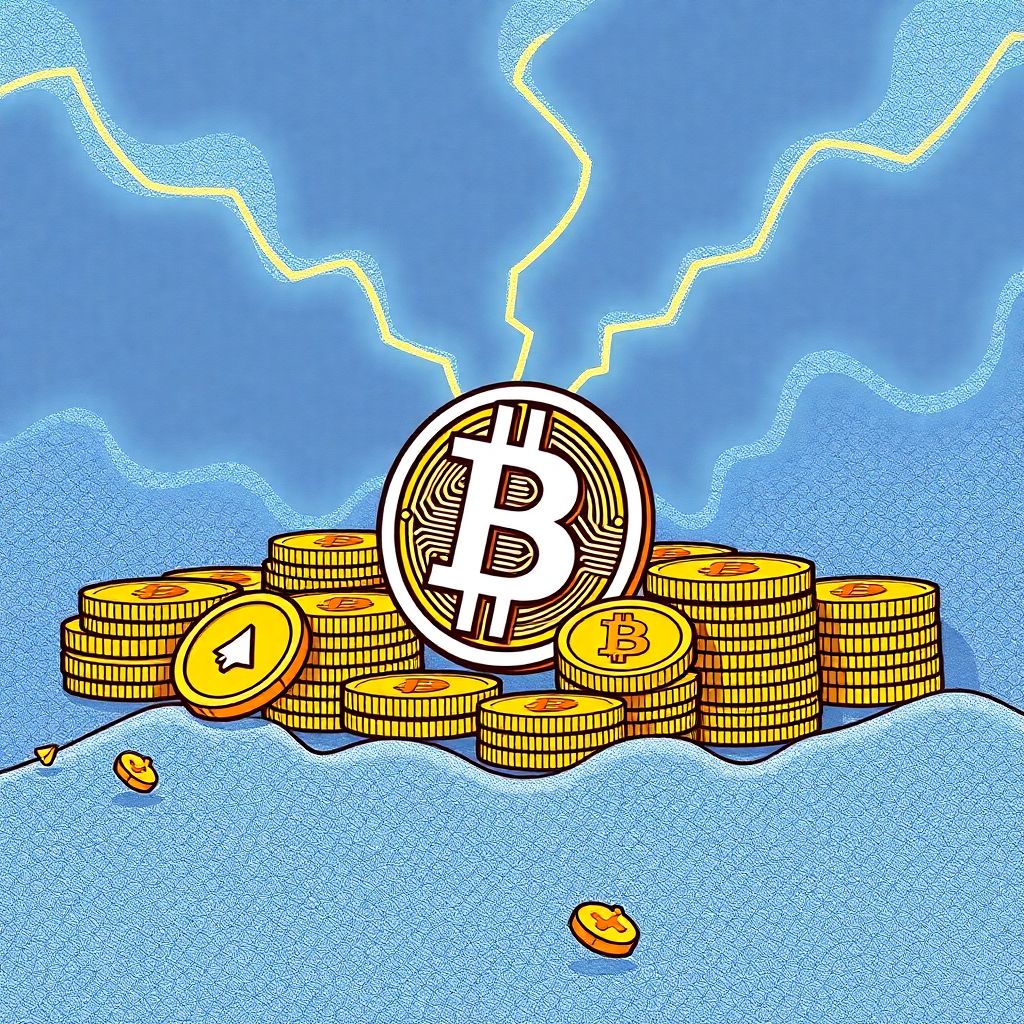Bitcoin Miners Offload Massive BTC Holdings: BTC.com Transfers 186,000 BTC to Binance in October
Recent on-chain data has revealed a substantial movement of Bitcoin from the BTC.com mining pool to one of the largest cryptocurrency exchanges, Binance. Over the month of October, BTC.com transferred a staggering 186,000 BTC — an amount valued at approximately $19.9 billion at current market rates — to the exchange, raising concerns about increasing sell pressure in the market.
The key metric under scrutiny is the “Miner to Exchange Flow,” an on-chain indicator that tracks the volume of Bitcoin being sent from miner-associated wallets to centralized exchanges. When such transfers spike, it usually suggests that miners are preparing to sell their holdings, either to cover operational expenses or in response to broader market signals.
In this case, the data specifically highlighted wallets tied to BTC.com on the sending end and Binance as the receiving platform. Analysts observed that the largest spikes in this flow occurred during mid-October, coinciding with local troughs in Bitcoin’s price. This timing suggests that miners may have been engaging in panic selling, potentially reacting to short-term price volatility or anticipating further declines.
Miners routinely sell portions of their Bitcoin to manage running costs, particularly electricity and hardware maintenance. However, the scale of these latest transfers is far from typical. While the market can often absorb moderate selling activity from miners, such unusually large liquidations can exert significant downward pressure on Bitcoin’s price, contributing to increased volatility and bearish sentiment.
The miner-driven sell-off is not the only factor influencing the market. On-chain analysis from leading firm Glassnode has also pointed to a notable shift in behavior among long-term Bitcoin holders (LTHs) — investors who have held their coins for over 155 days. Historically, LTHs are known for their conviction and tendency to hold through market cycles. However, recent data shows this group has ramped up their spending activity, moving between $2 billion and $3 billion worth of Bitcoin per day in early October, up from around $1 billion daily in July.
Significantly, this increase in distribution by long-term holders has been more gradual and sustained compared to previous market cycles, where large sell-offs often came in sudden bursts. This continuous outflow suggests a broader sentiment shift among seasoned investors, possibly signaling anticipation of a prolonged consolidation phase or macroeconomic uncertainty.
Bitcoin’s price has responded accordingly, registering a nearly 4% drop within a 24-hour period amid these developments. The convergence of selling pressure from both miners and long-term holders indicates a potentially fragile short-term outlook for the cryptocurrency.
Understanding the Impact of Miner Transfers on Market Dynamics
The transfer of Bitcoin from mining pools to exchanges isn’t inherently bearish. In fact, it’s a normal part of the ecosystem. Miners earn BTC as block rewards and periodically liquidate some of their holdings to finance operations. However, the timing, volume, and frequency of these transfers can provide valuable insights into market sentiment.
When significant amounts of BTC are moved during periods of price weakness, it often reflects a lack of confidence among miners in the short-term price trajectory. In October’s case, the BTC.com pool’s decision to offload such a large sum during local price bottoms could suggest that miners were either cutting losses or bracing for deeper corrections.
Why Binance? The Choice of Exchange Matters
The fact that all 186,000 BTC were sent specifically to Binance is also noteworthy. Binance is one of the most liquid crypto exchanges globally, offering miners the ability to execute large sales with minimal slippage. Choosing Binance indicates that BTC.com likely intended to sell most, if not all, of the transferred coins quickly and efficiently.
Miner Behavior as a Sentiment Indicator
Miners are often considered one of the most informed cohorts in the Bitcoin ecosystem. Their behavior can sometimes preempt broader market trends. If a significant number of miners shift towards aggressive selling, it may indicate expectations of lower future prices or difficulty in sustaining profitable operations at current price levels.
Are We Entering a Distribution Phase?
The combination of miner and long-term holder distribution suggests the market may be entering a broader redistribution phase. These periods are not inherently bearish in the long term but often precede consolidation or corrective phases, giving new investors an opportunity to accumulate while older participants realize gains or rebalance portfolios.
What It Means for Retail Investors
For retail investors, spikes in miner-to-exchange flows are worth monitoring. While they don’t always result in immediate price drops, they can foreshadow increased volatility. Understanding these flows can help traders make more informed entry and exit decisions, particularly in uncertain or sideways markets.
Can the Market Absorb Massive Miner Selling?
Despite the large numbers, the Bitcoin market has matured significantly in recent years. With institutional players, ETFs, and increased liquidity, the market is more capable of absorbing sizable sell-offs than in past cycles. However, persistent selling from key participants like miners and LTHs can still suppress bullish momentum, limiting upside potential in the short term.
Looking Ahead: Will the Trend Continue?
Whether BTC.com and other mining pools will continue offloading such large quantities remains to be seen. Much will depend on Bitcoin’s price action in the coming weeks, network difficulty adjustments, and broader macroeconomic trends like interest rates and inflation.
If prices stabilize or rebound, we could see miners resume regular, smaller-scale selling. However, if bearish pressure persists, further large transfers to exchanges might follow, especially if miners begin operating at a loss.
Conclusion
The October transfer of 186,000 BTC from BTC.com to Binance marks one of the largest miner-related movements in recent memory. While part of this activity is routine, the timing and scale raise important questions about market sentiment and the broader economic pressures facing Bitcoin miners. Coupled with increased activity from long-term holders, the market may be entering a transitional phase that investors should watch closely.
Remaining informed through on-chain data and behavioral trends is more crucial than ever as Bitcoin continues to evolve in a complex, fast-moving financial landscape.

